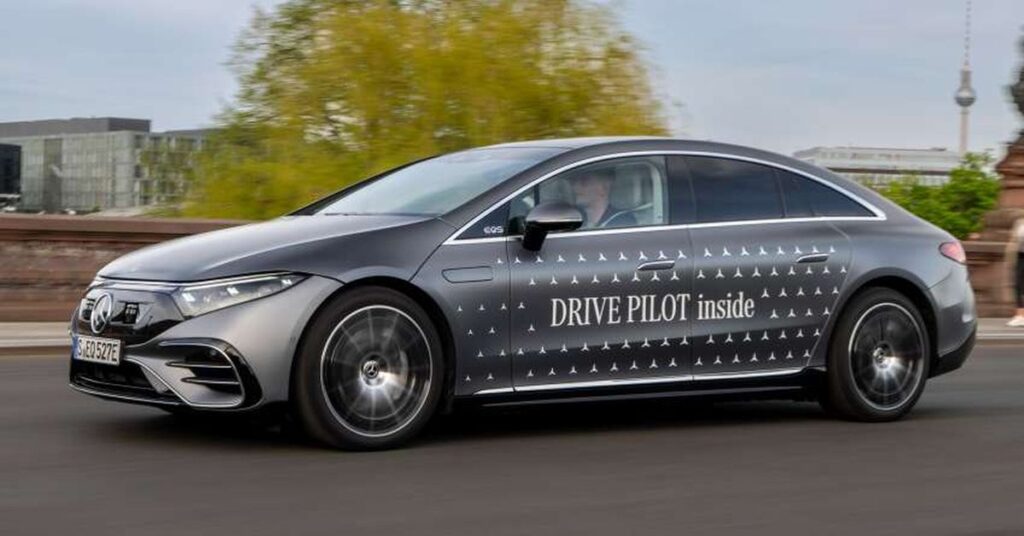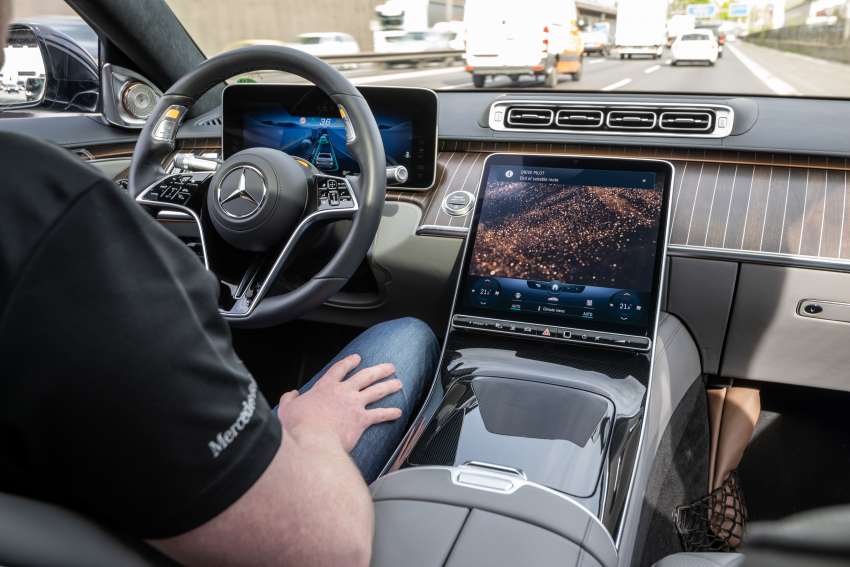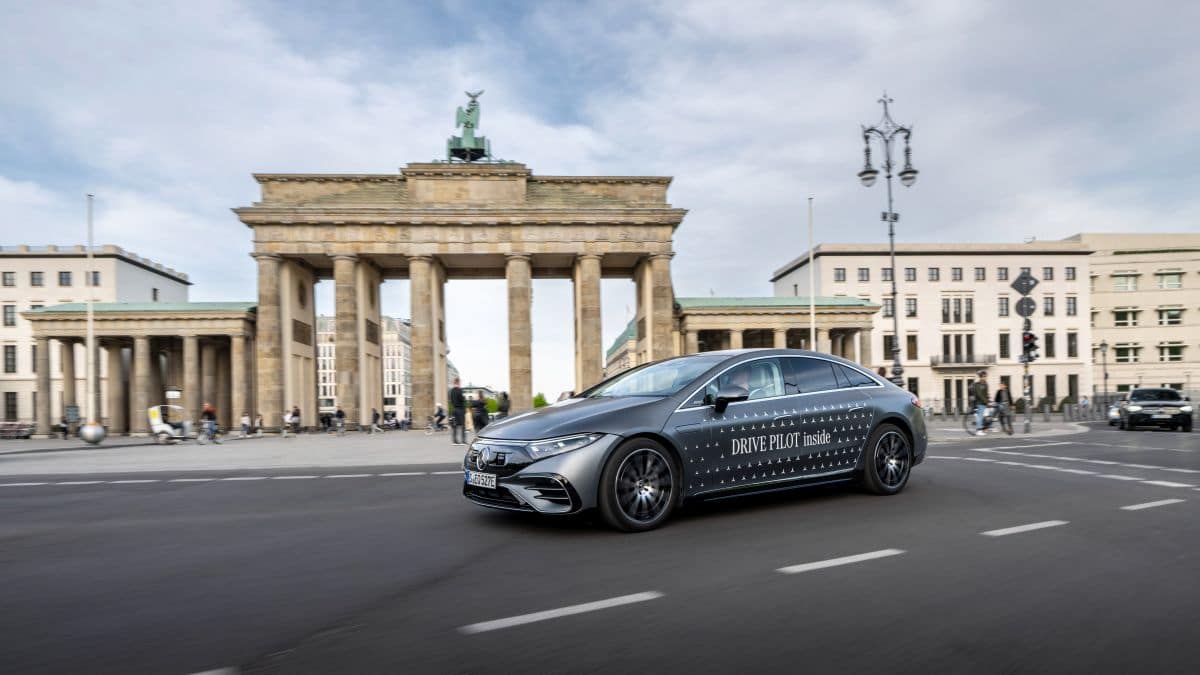Mercedes-Benz will begin offering its Drive Pilot system as an option for the latest S-Class and EQS from May 17, 2022. In fact, it has become the first automotive company in the world to meet stringent legal requirements for a world-class autonomous driving system. 3 SAE.
Following SAE International’s description of level 3 automated driving, referred to as “conditional driving automation,” drivers do not need to oversee the technology and are free to engage in other activities when the system is active. However, a driver must still be present, alert and able to take control of the vehicle at all times, especially in the event of an emergency in the event of a system failure.

According to Mercedes-Benz, Drive Pilot thus enables the “Conditionally automated driving“, Under which owners can entrust the driving activity to the system, but only under certain conditions. As the company explains, these conditions are “situations of heavy traffic or congestion on suitable motorway sections in Germany up to a speed of 60 km / h ”.
So while the car is driving itself, the driver “can relax or work and recover valuable time,” the company said. As described, level 3 autonomous driving can only be used on “suitable motorway sections”, which Mercedes-Benz claims involve 13,191 km of approved motorway in Germany.
Drive Pilot is based on the vehicle sensing technology offered by the Driving Assistant package and includes additional sensors for safe operation. These include radar, LiDAR, cameras, as well as ultrasonic and humidity sensors positioned at strategic points of the vehicle. A positioning based system on an HD digital map it also ensures that the system has a 3D image of the road and its surroundings. This highlights information on road geometry, route characteristics, road signs and special traffic events.
Drive Pilot AI learning managed by Mercedes-Benz
The collected data are constantly updated and compared with a system dback-ends to ensure Drive Pilot is fed with the best possible information to facilitate decision making. Mercedes-Benz has also opted for “Supervised learning” instead of just using algorithms (through self-learning approaches) to handle things like pedestrian detection.
As such, Mercedes defines and monitors what AI can learn and, matching its ethical requirements, the detection process is non-discriminatory. This means that the various sensors constantly monitor the road and the edge of the road. All this to always detect people correctly, regardless of clothing, build, posture or other characteristics.

Even with all sensors and AI training, redundancy is still important for conditional automated driving. Redundancy takes care of the braking system, steering, power supply and parts of the sensor technology. Added to these are the battery, the steering motor, the wheel speed sensors and the various algorithms used by the system to calculate the data.
However, in the event of a malfunction, the vehicle remains maneuverable thanks to the redundant design of the system. This allows Drive Pilot to perform a safe handover to the driver. If it does not happen within 10 seconds, for example due to a medical emergency, Drive Pilot will initiate a safe emergency stop for the vehicle. This is possible with the Intelligent Drive Controller which continuously calculates the optimal trajectory to arrive at a safe stop.
Today in Germany tomorrow around the world
If there were any accidents, Mercedes argued that the legal responsibility it will fall on itself and not on the driver of the vehicle who activated Drive Pilot. This is in line with the requirements set by the regulatory authorities.
In Germania, the Drive Pilot option for the S-Class will cost € 5,000. You go up to 7,430 euros for the EQS. For the latter the cost is higher as it also includes the Plus driving assistance package which is priced at 2.430 euro.
Following the launch in Germany, Mercedes-Benz aims to have its Drive Pilot approved in California and Nevada by the end of the year.
















Leave a Reply
View Comments